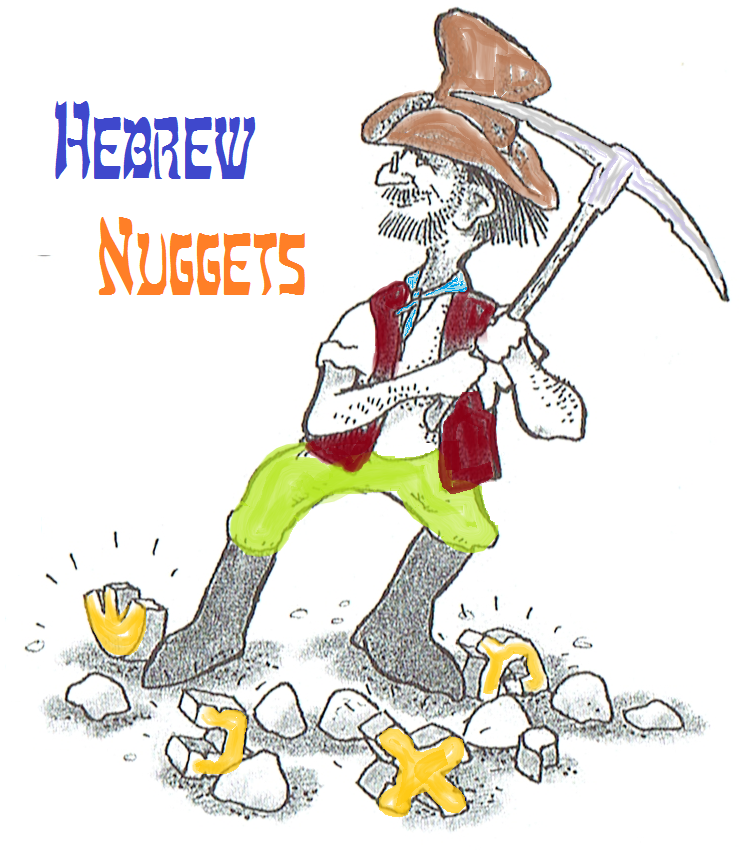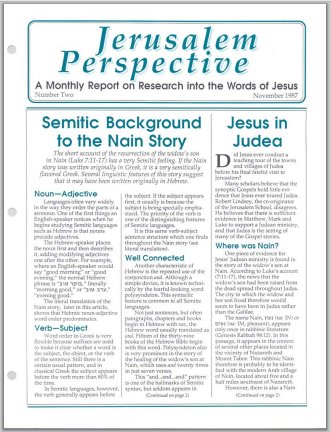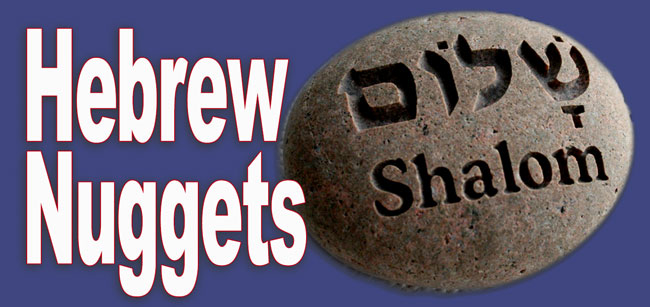Hebrew Nuggets is an article series that introduces beginners to Hebrew letters, Hebrew vocabulary and spiritual insights from the Hebrew tradition.
Revised: 24-Aug-2015
 The second sound in Jesus’ Hebrew name, יֵשׁוּעַ (ye·SHU·a‘), is a vowel. Hebrew vowels are represented by signs that are placed under, or sometimes, to the left of consonants (letters). A vowel is pronounced after the consonant that carries its sign.
The second sound in Jesus’ Hebrew name, יֵשׁוּעַ (ye·SHU·a‘), is a vowel. Hebrew vowels are represented by signs that are placed under, or sometimes, to the left of consonants (letters). A vowel is pronounced after the consonant that carries its sign.
The vowel we will consider in this lesson is called tse·RE, which takes the form of two horizontal dots. Here, the tse·RE appears under the yod, the first letter in יֵשוע. In the transliteration system used here, this vowel is represented by the letter “e.” When unaccented, as in the name ye·SHU·a‘, the tse·RE is pronounced almost like the “e” in the word “net.”
Premium Members and Friends of JP must be signed in to view this content.
If you are not a Premium Member or Friend, please consider registering. Prices start at $5/month if paid annually, with other options for monthly and quarterly and more: Sign Up For Premium
For the transliteration system used in this series, click here.

- [1] Rachel Hachlili, “Names and Nicknames of Jews in the Second Temple Period,” Eretz-Israel (Brawer volume) 17 (1983): 188-211 (Hebrew). ↩




Comments 1
Thank you so much for offering this easy explanation for reading the ancient Hebrew language. I have already learned the Hebrew Alepf-Beit but have not found an easy explanation of the vowel sounds. This will help immensely. Now I just need to develop a vocabulary!
It is so important to understand the language and culture of first century Yisrael. Without it we miss so much of the meaning that is hidden in the Word. It is appropriate that you used the illustration of the gold miner, for we are mining for treasure hidden in the Word! Thank you so much. Shalom.